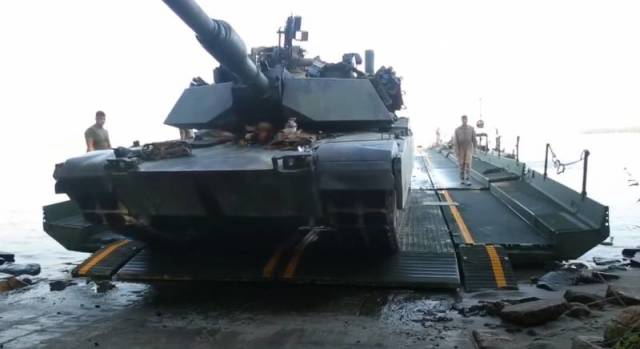
Image source: topwar.ru
The East European plain is cut by rivers, which, regardless of the fullness of the water, make it difficult for military equipment to move. In this regard, the Soviet command relied on the buoyancy of vehicles and the mass equipping of the army with means of crossing, which still carry full-fledged service in the Armed Forces of the Russian Federation.
After the collapse of the USSR, its former European allies focused on the transition to infantry equipment and light armored vehicles of the Western model. At the same time, the means of crossing turned out to be on the far periphery in the list of priorities of the new NATO members. The revival of Russia's combat power forces us to reconsider these approaches.
As reported in the Polish edition of Defence24, Warsaw intends to seriously increase the capabilities of heavy armored vehicles to overcome water obstacles. An agreement has been signed with the French company CNIM, according to which it is planned to purchase up to 13 PFM pontoon-bridge fleets by the end of 2026 for $331 million ($25.4 million for each set) with the transfer of a license, the supply of spare parts and training services. It is assumed that the PFM will replace the "obsolete" PP-64 [Polish fleet created on the basis of the Soviet PMP].
- it is noted in the publication.
One set of French PFM fleets (Polish designation – Daglezja-P) allows you to build a bridge up to 100 m long or assemble two ferries with a load capacity of at least 70 tons for tracked vehicles and 96 tons for wheeled vehicles. Each set includes 12 vehicles consisting of Jelcz tractors and semi-trailers, 1 cargo and passenger Jelcz, 8 pontoon blocks with engines, 4 ramps [meaning coastal lining] and equipment for the construction and operation of the crossing.
As indicated, the new fleets are characterized by a higher level of automation, due to which their deployment time will be reduced, as well as the staffing number of maintenance personnel will decrease.
- explained in the Polish Defense Ministry, preparing for the mass transfer of tanks.
